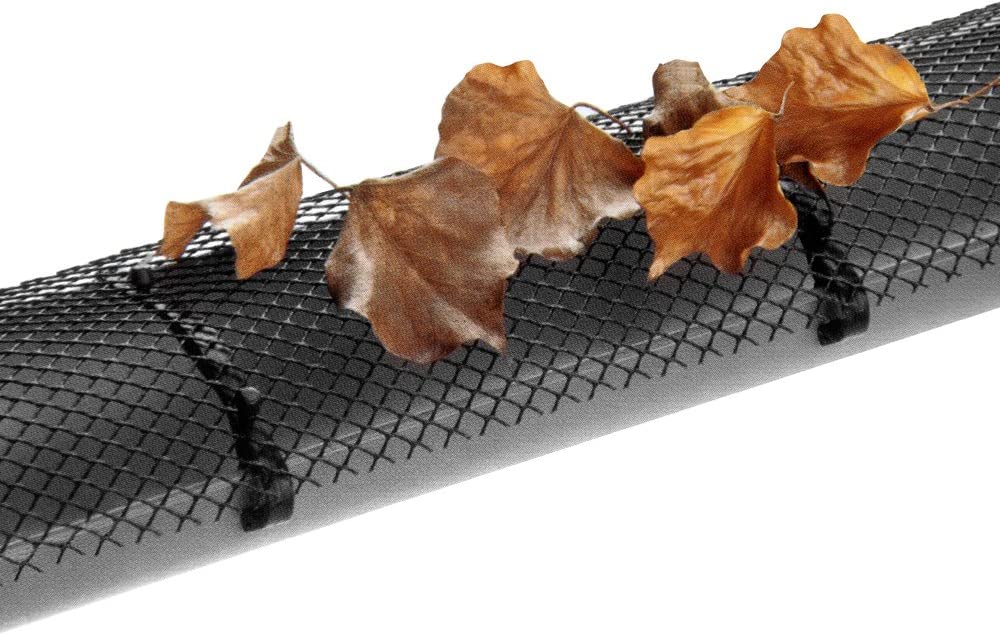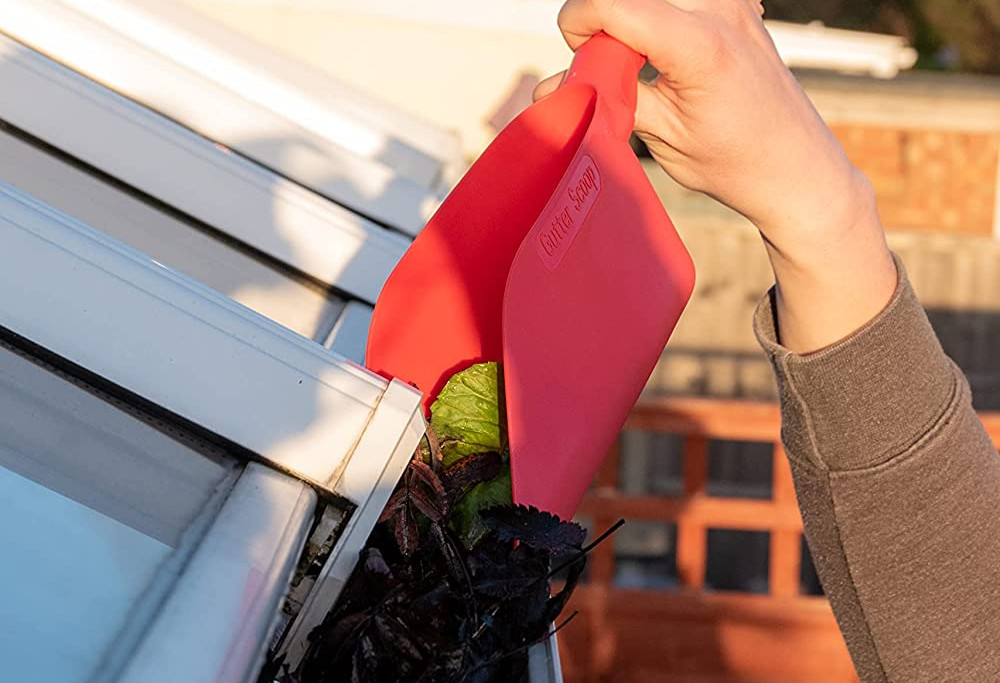In this guide, you can learn how to clean gutters and maintain all types of guttering, how to clear gutter blockages, and how to prevent your gutter from becoming filled with leaves and other debris in the future.
Leaving your gutters blocked is more than just unsightly. Gutters that aren’t cleared regularly can split, leading to an expensive repair or even lead to dampness inside your home.
Clear Gutters Are Important
Gutters, being out of sight most of the time, often don’t get the same attention as other things on our maintenance lists. But they are an essential part of keeping your home free from dampness, and ensuring they are kept clean and well-maintained is important.
When working as they should, gutters channel rainwater to downpipes. The downpipes transport the water safely away from your house, running into a drain or a soakaway. If any part of this system is blocked, water can build up and spill over the edge of the gutters.
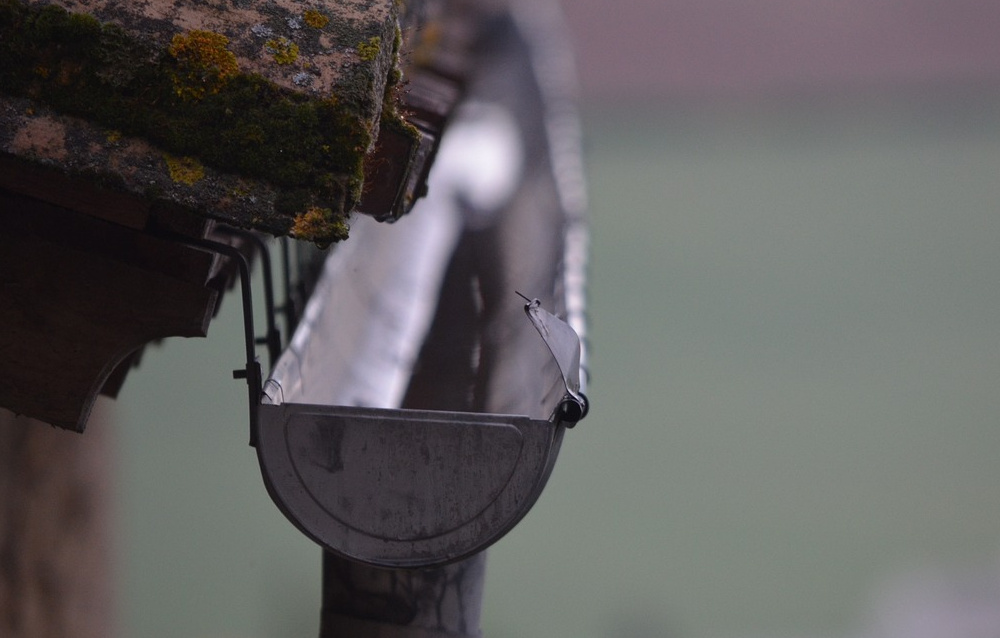
How Do You Know if Your Gutters Are Blocked?
There are some obvious signs that your gutter is blocked somewhere along its length.
- The most obvious is water spilling over the edge where it shouldn’t be. You might even start to notice stains on the walls if the blockage is there long enough.
- It is also a good idea to check the flow of your downpipe during heavy rain. If the flow is slow or non-existent, it means the water is being stopped from reaching the downpipe by a blockage.
- If a blockage is there long enough, plants can begin to grow in the build-up of leaves, dirt, etc., and appear over the edge of the guttering.
- Sagging gutters can also be a sign that there is a blockage. If rainwater becomes trapped in one section of the gutter, its weight of it can put a strain on the joints or even the brackets that hold the gutter in place. This can cause the gutter to sag, and you might even see leaking from the joints between sections.
What Damage Can Blocked Gutters Cause?
The water could run down the outside of your house, soaking into the fabric of the building. It could also spill out onto an area where it can’t soak away, forming puddles that can also soak into the brickwork or foundations. The weight of the water that builds up can also be an issue, splitting joints or even causing guttering to break away from the facia.
Keeping gutters clear of debris helps to keep your rainwater drainage system working as it should. And it is a lot easier than dealing with a serious damp problem.
Tools For Cleaning Blocked Gutters
Here are the tools and equipment you will need to clean gutters safely and effectively.
Ladder – You will need a good-quality and well-maintained ladder. Ladders can be expensive to buy, so consider hiring one for the day.
Trowel – To scoop out debris from the gutter. A small garden trowel is an ideal size to fit most guttering.
Bucket – You will need a bucket to hold the leaves and other debris you clear out.
Ladder Hook – You will need something to hold the bucket while you work. A simple double-ended hook will do the job.
Gloves – Not essential, but this job can be dirty and smelly. Waterproof gloves are useful for many other DIY jobs as well.
Quick Tip: If you don’t have a suitable hook, and don’t want to buy one, an old wire coathanger can be used. Bend the hanger part into a U-shape to hook over the ladder rung, and attach the bucket to the hook part.
How Often Do You Need to Unblock Gutters?
The answer to this question depends on several things. Including the location, the area surrounding your house, the amount of rainfall in that area, and even the type/size of guttering you have.
If your house is near trees or other areas where debris might fall onto the roof, your gutter might need to be cleaned out more regularly. Perhaps as often as 2-3 times a year.
Leaves and other debris can also be carried onto the roof and into your gutters by wind, even if you don’t have trees nearby. It will take much longer for debris to build up, but you should still clean your gutters annually. A good time to do it is just before autumn starts, so the gutters are clear for the leaves, rain, and snow of the colder months.
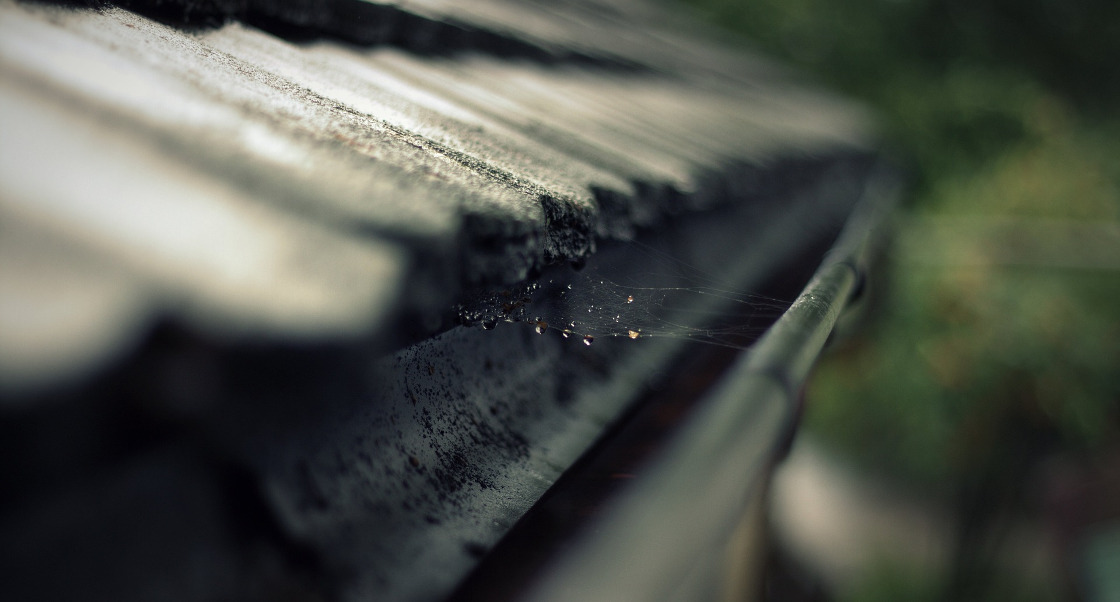
Safety Tips When Cleaning Gutters
Unless you have scaffolding or a cherry picker, you will have to use a ladder to reach the gutter. Falls from ladders account for a large percentage of household accidents in the UK and elsewhere, so you really need to take precautions.
Here are some essential safety tips when working on a ladder.
- If possible, have someone hold the bottom of the ladder whenever you are on it. If you don’t have a second person to hold the ladder, consider fixing ladder anchor points and using a ladder strap.
https://amzn.to/3QmtIwf - Ensure you follow the three-point contact rule. This means you should always have two hands and a foot, or two feet and one hand, etc., on the ladder as you climb and as you work.
- Don’t over-reach. Move the ladder rather than stretch to reach beyond what is comfortable.
- If the ground is slippery or wet, a non-slip ladder mat will help stop the bottom of the ladder from moving.
How to Clear a Gutter
With your ladder safely and securely positioned, and your bucket and trowel in hand, you can start cleaning the gutter.
Climb up and survey the gutter. If it is full of debris, you’ll just need to work your way along it. If the dirt and debris is concentrated in one place, move the ladder to the location of the blockage.
If the gutter is full of dry leaves, sticks, seeds, etc., you can just scoop it out with your gloved hand. If the gutter is blocked with wet debris, scoop it out carefully with the trowel and into the bucket.
If there is a build-up of sludge at the bottom, make sure you scoop it all out. But be careful not to apply too much downward force as you do so. You don’t want to break the guttering.
Clear the easily reachable section of the gutter, and then move the ladder along and repeat until the whole gutter is clear. Always ensure the ladder is secure after you move it. And remember to empty the bucket each time you climb down.
Wash The Gutter After Clearing It
The easiest way to wash down the gutter, ensuring it is as clean as possible, is to use a hose.
Move the ladder back to the start of the guttering run (the opposite end to the downpipe). Climb up with the hose and direct a decent flow of water along the gutter. This will wash any remaining small bits of dirt and debris along the gutter and into the downpipe.
If you don’t have a hose, you can carry water up in a bucket and carefully empty it into the gutter. Only fill the bucket with enough water so that it remains easy to carry up the ladder. You might need to repeat this a few times to wash down the gutter properly.
As you wash down the gutter run, keep an eye on the bottom of the downpipe. The water should flow cleanly out of the end in a steady flow. If it doesn’t or if the water appears to be backing up in the guttering, the downpipe could be blocked.
How to Clear the Downpipe
Having a clean and clear downpipe is just as important as a clear gutter. It is an essential part of the system, and although it is less likely to get clogged up with debris than the gutter, it isn’t impossible.
If water seems to be draining slowly out of the gutter, or flowing sluggishly out of the end of the downpipe, you could have a blockage. You can quickly check by tapping along the downpipe with a small stick or a screwdriver. It will sound hollow where it is clear, and return a dull thud if there is a blockage.
One way to clear small blockages is to climb up to the top of it on your ladder and feed a hose down into the pipe until it stops. Turn the hose on full. Hopefully, the force of the water will dislodge or break up the debris.
If the blockage is near the top of the downpipe, you can also try carefully breaking it up with a broom handle or a drain auger, if you have one. Insert the broom handle or auger into the top of the downpipe and gently try to break up the blockage.
If neither of these methods works, you will have to remove the downpipe or the section that contains the blockage. You can read more about clearing a downpipe in our complete guide.
Preventing Blocked Gutters
Prevention is better than cure. If you are finding yourself clearing your gutters several times a year, you might want to think about ways to prevent debris from building up. There are a couple of options available that thankfully don’t involve cutting down all of the trees around your house.
Gutter Guards – Gutter guards are usually a flexible mesh that you fit over the top of the gutter, along its entire length. Often curved, it stops large items, such as leaves or sticks, from getting into the gutter, while allowing water to pass through unimpeded.
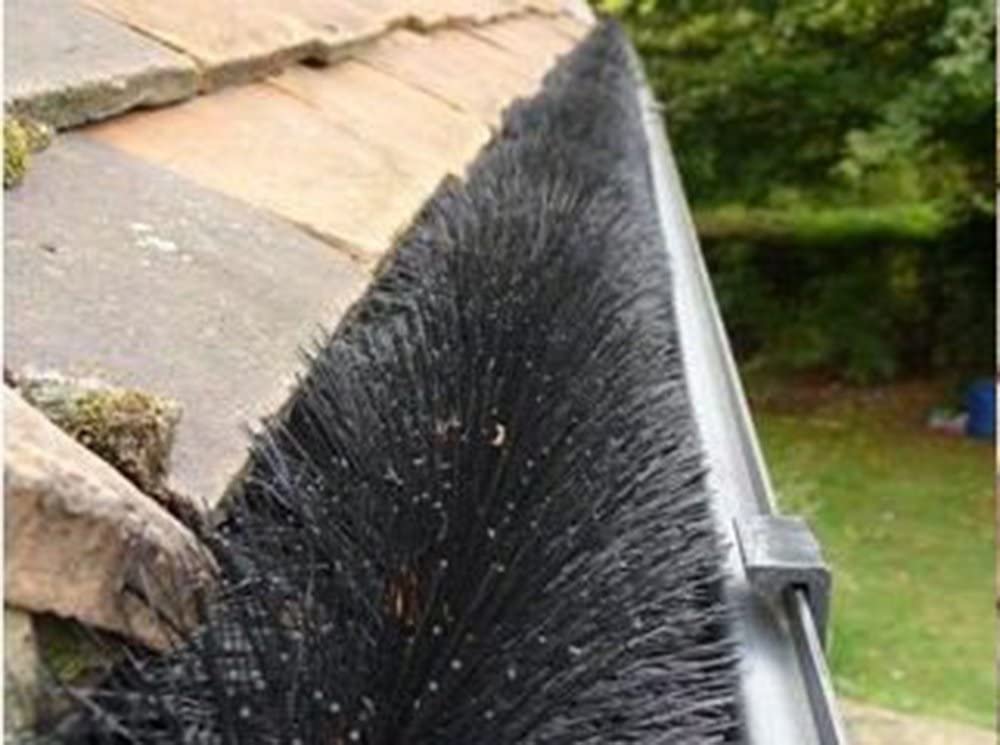
Some gutter guards are a more solid, flat metal plate with holes for the water to pass through. This type is generally more expensive but works in the same way. Because they are not flexible, you will need to ensure it is the exact size for your gutter, or they cannot be clipped on securely.
Gutter Hedgehog or Gutter Brush – Gutter brushes are a length of flexible steel wire surrounded by long bristles. The brush sits in the gutter, filling it and preventing debris from falling in. The long bristles leave plenty of room for water to drop into the gutter and flow along it smoothly.
